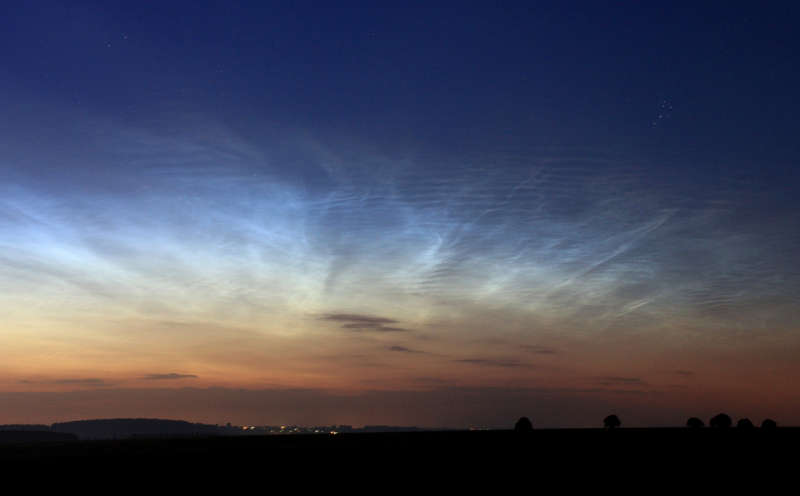
|
Credit & Copyright: Simon Lericque
(GAAC)
Explanation:
Bright noctilucent or night shining clouds are not familiar sights
from northern France.
But these electric-blue waves
coursed
through skies over the
small town of Wancourt in Pas-de-Calais on July 6, just before the dawn.
From the edge of space, about 80 kilometers above Earth's surface, the
icy clouds
still reflect sunlight even though the Sun itself is
below the horizon as
seen from the ground.
Usually spotted at
high
latitudes in summer months the diaphanous
apparitions are also known as polar mesospheric clouds.
The seasonal clouds are understood to form as water vapor driven
into the cold upper atmosphere condenses on the fine dust particles
supplied by
disintegrating meteors
or volcanic ash.
NASA's AIM
mission provides projections of the noctilucent
clouds as
seen from space.
|
January February March April May June July August September October November December |
| ||||||||||||||||||||||||||||||||||||||||||||||||
NASA Web Site Statements, Warnings, and Disclaimers
NASA Official: Jay Norris. Specific rights apply.
A service of: LHEA at NASA / GSFC
& Michigan Tech. U.
Based on Astronomy Picture
Of the Day
Publications with keywords: noctilucent clouds
Publications with words: noctilucent clouds
See also:
